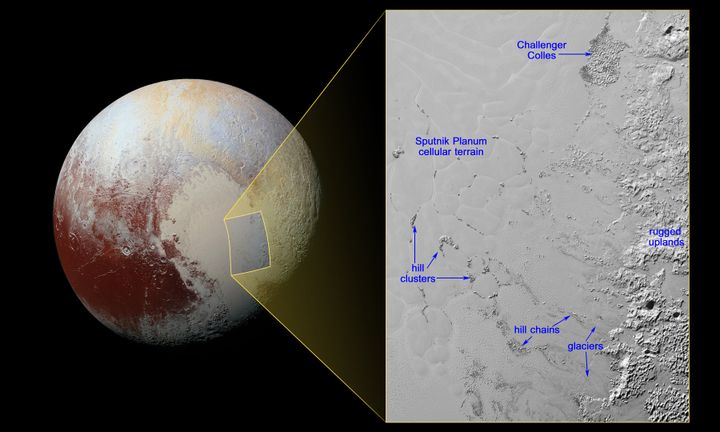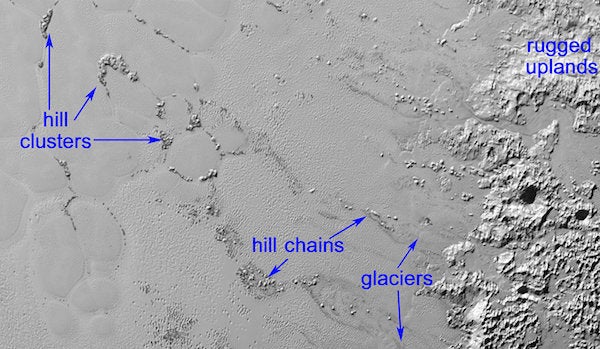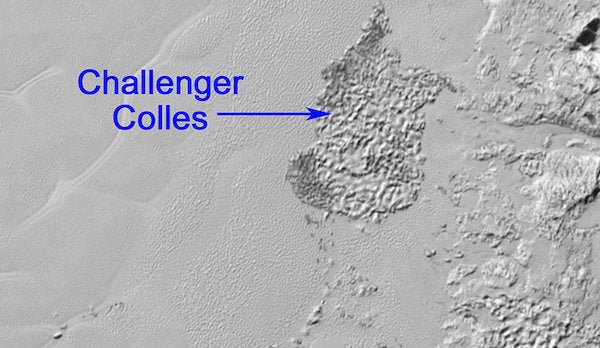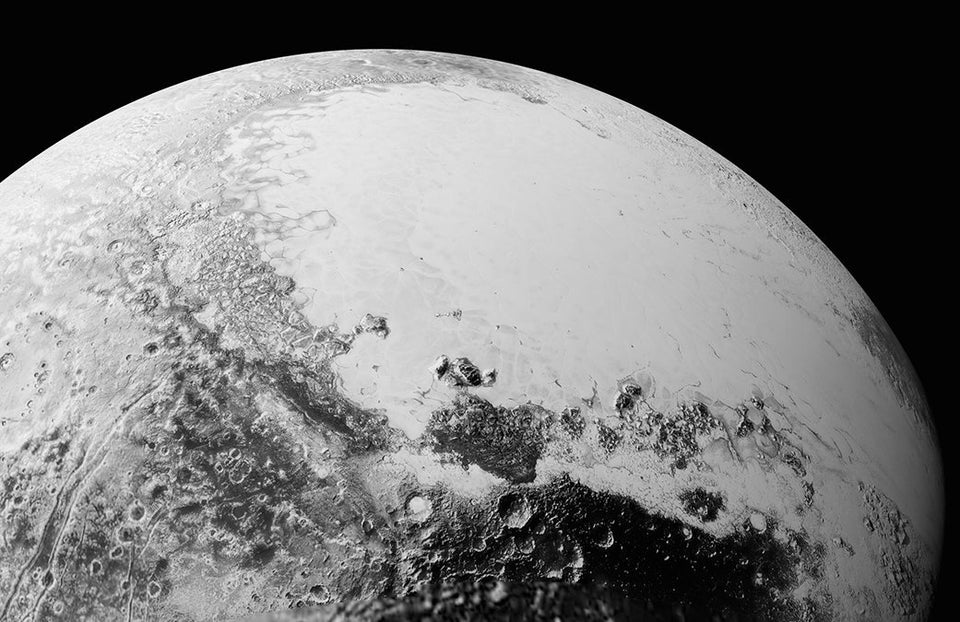Pluto just keeps getting weirder.
NASA released new images last week of what the space agency described as "floating hills," essentially massive icebergs drifting in a sea of frozen nitrogen.
These hills, which can be several miles across, are located in the middle of the Sputnik Planum, or the icy plains of the planet's heart-shaped region:

The region is home to glaciers as well as clusters of these frozen hills, which NASA said could be fragments of water ice from the nearby uplands.
"Because water ice is less dense than nitrogen-dominated ice, scientists believe these water ice hills are floating in a sea of frozen nitrogen and move over time like icebergs in Earth’s Arctic Ocean," NASA said in a news release.
"When the hills enter the cellular terrain of central Sputnik Planum, they become subject to the convective motions of the nitrogen ice, and are pushed to the edges of the cells, where the hills cluster in groups reaching up to 12 miles (20 kilometers) across," the space agency said.

One especially large cluster covering a distance of about 37 miles by 22 miles appear to be icy hills that were "beached" in shallow nitrogen. The area was nicknamed the Challenger Colles in honor of the space shuttle Challenger, which exploded shortly after liftoff on Jan. 28, 1986:

NASA said the photo was taken by the Multispectral Visible Imaging Camera instrument aboard New Horizons from a distance of 9,950 miles on July 14, 2015, shortly before the spacecraft's closest approach to the planet.
Also on HuffPost:

